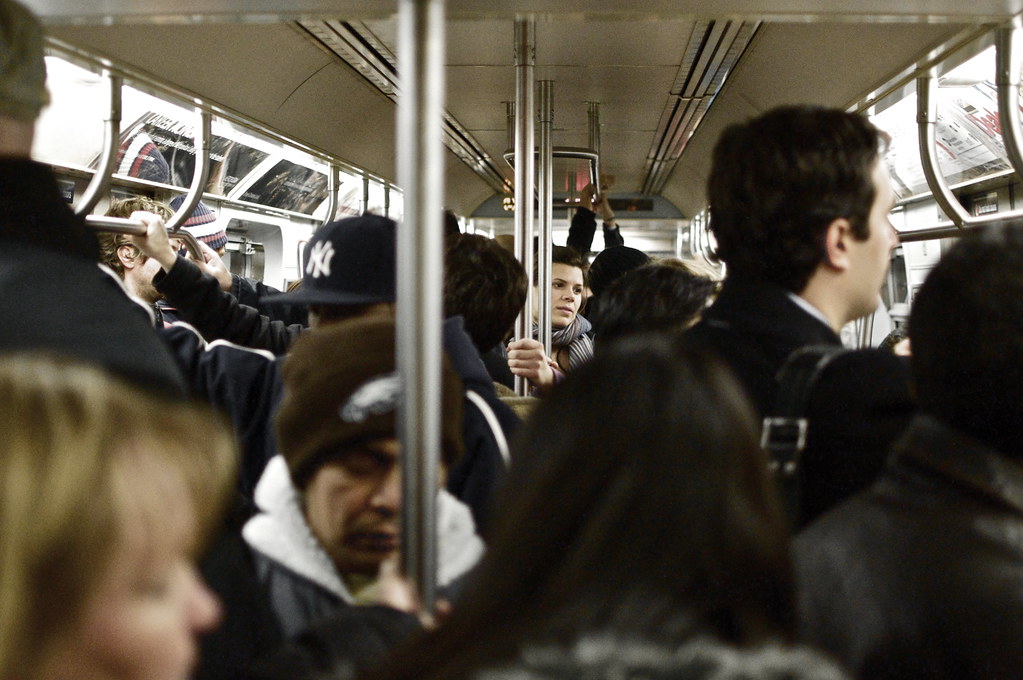 When 2011 arrives, the MTA will have the statutory power to raise subway fares. The state legislature granted the authority this power when it approved the 2009 funding package, and the MTA will, through thick or thin, implement a fare hike of at least 7.5 percent by early 2011 at the latest. But the way things are going, that fare hike could come sooner.
When 2011 arrives, the MTA will have the statutory power to raise subway fares. The state legislature granted the authority this power when it approved the 2009 funding package, and the MTA will, through thick or thin, implement a fare hike of at least 7.5 percent by early 2011 at the latest. But the way things are going, that fare hike could come sooner.
As Andrew Grossman of The Wall Street Journal reports today, the MTA is up the proverbial creek without a paddle. On top of a $400 million deficit, the MTA says tax revenues are down by $135 million this year. The agency has to present a balanced budget next July, and with service cuts set go into effect next week, the agency’s only option may be to raise the fares, as Grossman puts it, “higher and sooner” than anticpated.
For months, though, Jay Walder, the MTA CEO and Chairman, has tried to avoid a third fare hike in as many years. He’s led an admirable effort to trim inefficiencies in the way the MTA works; he’s ushered in a regrettable slate of service cuts; he’s tried to work with the union to reform payroll and pension costs. But the agency’s appetite for service cuts may be at an end.
“I don’t see how you do much more service cutting without really making an overcrowded system, frankly, or putting you in a situation where we’re like other transit systems that only serve the trunk lines and don’t have bus service into other heavy demand areas,” Bill Henderson of the Permanent Citizens Advisory Council to the MTA, said to The Journal, “If you’ve got to do one or the other, [raising fares is] probably the more acceptable one for the riders because at least the service is still there.”
Of course, the riding public may not find it appealing to see fares go up so soon after services are cut. In the past, fare hikes have been tied to increases in service, and even if those increases were the token additions of a few rush hour trains, riders weren’t asked to suffer through the indignities of paying more for less service. Now, though, it appears as though the MTA has its back to the wall.
This isn’t the first time this year we’ve heard talk of a premature fare hike. In March, talk of an increase emerged in the press, but the MTA officially denied considering raising its rates. Still, when a one percent increase in the fare generates approximately $50 million in additional revenue, the financial promises of a fare hike always remain low-hanging fruit for a financially strapped MTA to pluck. It might just be inevitable.

 For New Yorkers attached to their subway system, the area of midtown west of 8th Ave. often feels like undiscovered territories. Parts of 10th and 11th Ave. in the West 30s or 40s are a good 15-minute walk from the subway, and as the rest of Manhattan has seen a spike in real estate value over the last 15-20 years, the area around the Lincoln Tunnel and in Hells Kitchen has been slower to grow. There are still, the romantics say, some true neighborhoods left on this island after all.
For New Yorkers attached to their subway system, the area of midtown west of 8th Ave. often feels like undiscovered territories. Parts of 10th and 11th Ave. in the West 30s or 40s are a good 15-minute walk from the subway, and as the rest of Manhattan has seen a spike in real estate value over the last 15-20 years, the area around the Lincoln Tunnel and in Hells Kitchen has been slower to grow. There are still, the romantics say, some true neighborhoods left on this island after all.

 As part of its budget-paring efforts, New York City Transit has allowed its system’s cleanliness to slip. Fewer cleaners are available to tend to stations and subway cars, and work shifts that are empty due to sick days are often left unfilled so that the authority does not need to pay out overtime. As such, the trains have become dirtier, a new report issued today by the Straphangers Campaign says.
As part of its budget-paring efforts, New York City Transit has allowed its system’s cleanliness to slip. Fewer cleaners are available to tend to stations and subway cars, and work shifts that are empty due to sick days are often left unfilled so that the authority does not need to pay out overtime. As such, the trains have become dirtier, a new report issued today by the Straphangers Campaign says.

















 New Yorkers tend to view the subway map and the system’s current routes as something set in stone. The W has always run from Lower Manhattan to Astoria; the Q has now and forever been the Brighton local to Coney Island. In truth, it takes an encyclopedia memory of subway history to remember the myriad service changes and now-defunct routes that litter transit history. Anyone want to hop the QJ or NX with me?
New Yorkers tend to view the subway map and the system’s current routes as something set in stone. The W has always run from Lower Manhattan to Astoria; the Q has now and forever been the Brighton local to Coney Island. In truth, it takes an encyclopedia memory of subway history to remember the myriad service changes and now-defunct routes that litter transit history. Anyone want to hop the QJ or NX with me?